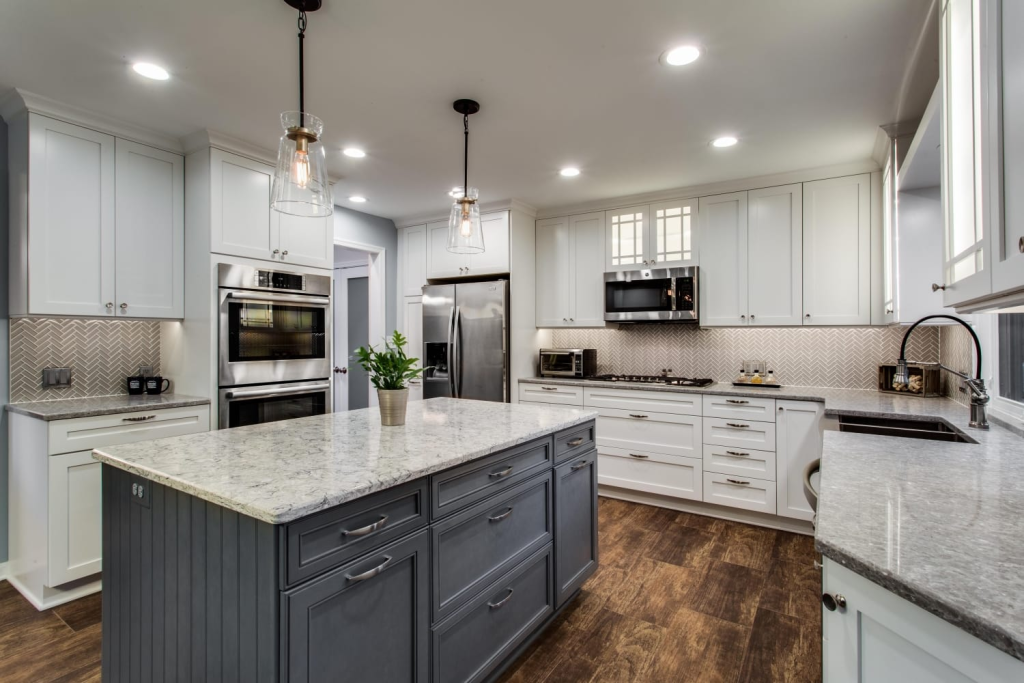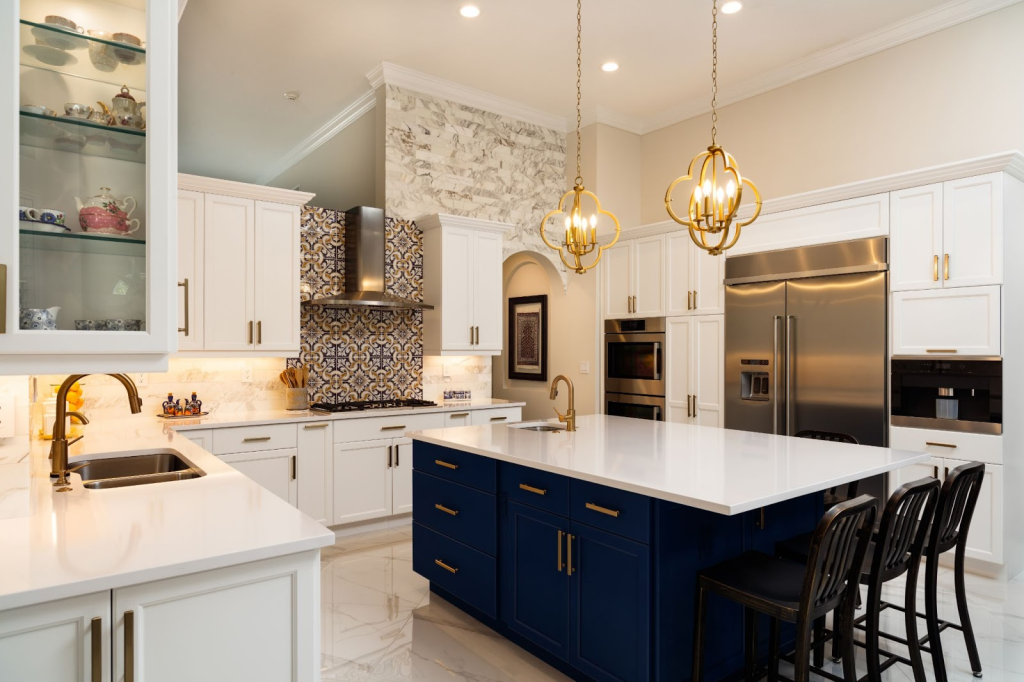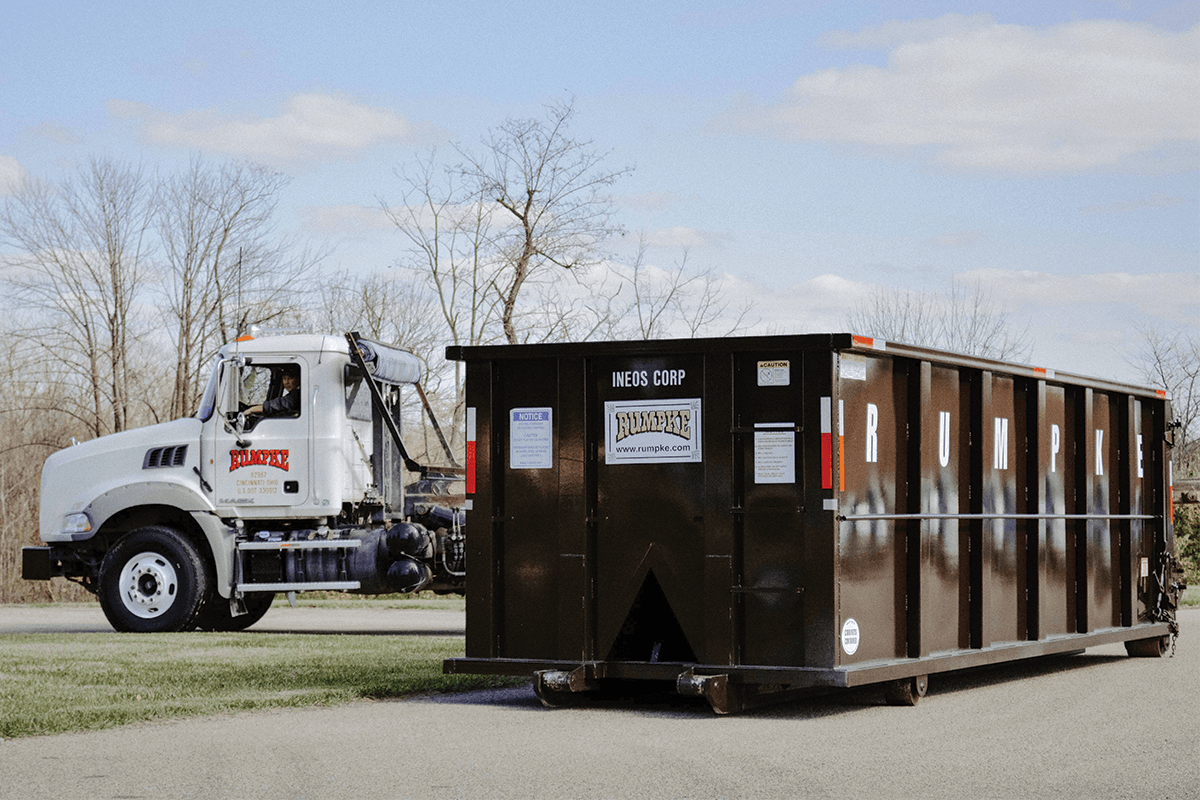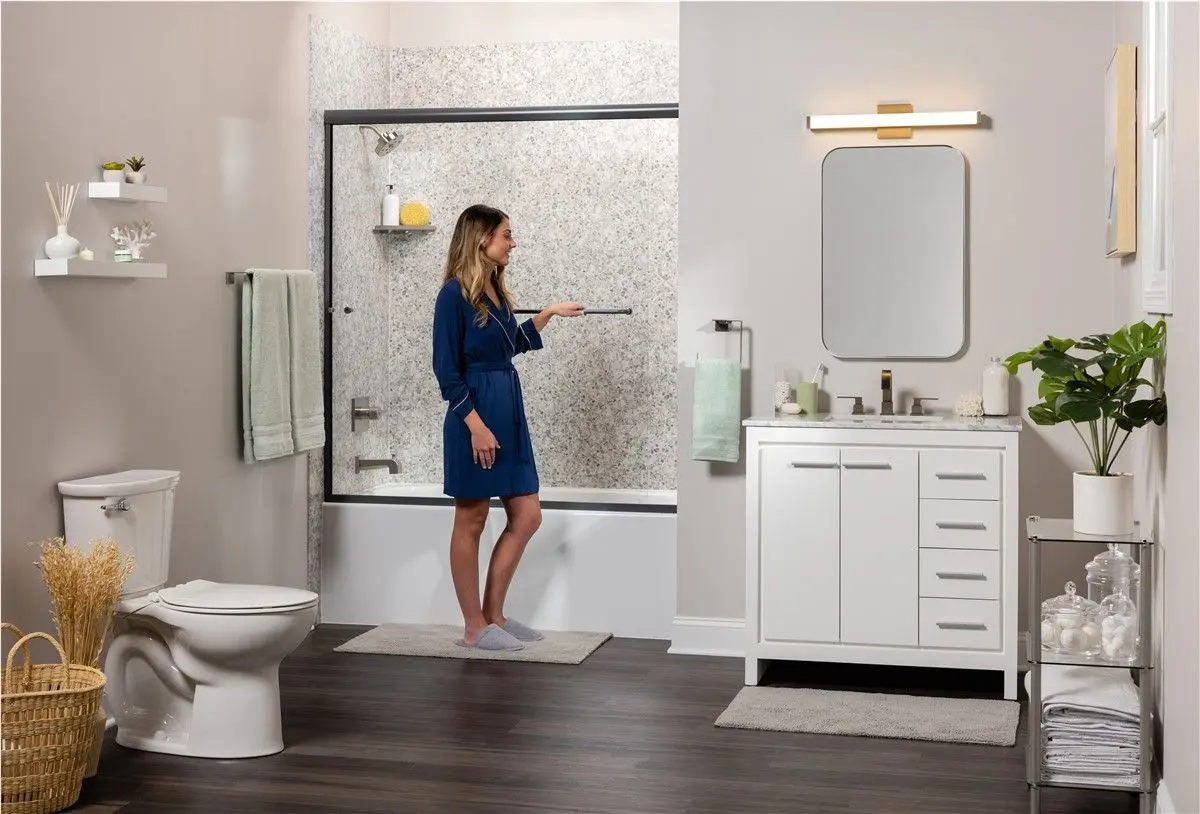The kitchen is often called the heart of the home, and for good reason. It’s where families cook, share meals, and connect every day. But over time, even the most beloved kitchens can start to feel outdated or inefficient. That’s why kitchen remodeling has become one of the most popular home improvement projects across the United States.

Whether you’re hoping to improve functionality, boost home value, or simply create a more welcoming space, understanding the basics of kitchen renovation can help you plan wisely — and avoid costly mistakes.
1. Why Homeowners Choose to Remodel Their Kitchens
There are many reasons Americans decide to invest in kitchen updates. The most common include:
- Improving Functionality: Adding more counter space, better lighting, or an open layout for family gatherings.
- Energy Efficiency: Upgrading to Energy Star appliances and LED lighting can lower utility bills.
- Modernizing Appearance: Replacing old cabinets, flooring, and countertops for a cleaner, contemporary look.
- Increasing Home Value: A well-designed kitchen can add up to 15% to your home’s resale price.
- Adapting for Lifestyle Changes: Families often remodel to include islands, coffee stations, or accessible designs for seniors.
2. How Much Does a Kitchen Remodel Cost in the U.S.?
Kitchen remodeling costs vary widely depending on size, materials, and scope of work. Here’s a general price range based on 2024 data:
| Type of Remodel | Average Cost (USD) | Details |
|---|---|---|
| Minor cosmetic update | $8,000 – $15,000 | Paint, new hardware, lighting, and small appliance upgrades. |
| Mid-range remodel | $20,000 – $45,000 | New cabinets, countertops, flooring, and semi-custom layout. |
| High-end custom remodel | $50,000 – $100,000+ | Full redesign with custom cabinetry, luxury materials, and structural changes. |
Pro tip: Homeowners typically recover 60–80% of their investment when selling their home — especially if the remodel improves functionality and design flow.
3. How to Choose the Right Kitchen Remodel for Your Home
Before you start tearing out cabinets or ordering countertops, take time to plan. Here’s how to choose the right remodel for your needs and budget:
a. Set a Clear Budget
Determine how much you can comfortably invest, and allocate funds wisely:
- 40% for cabinets
- 15% for appliances
- 15% for countertops
- 10% for flooring
- 10% for labor and permits
- 10% for unexpected expenses
Always add a 10–15% cushion for surprises like plumbing or electrical issues.
b. Consider Your Layout
Popular layouts include:
- L-Shaped: Great for small to medium kitchens.
- U-Shaped: Offers maximum storage and counter space.
- Open Concept: Ideal for entertaining and modern living.
- Galley Style: Efficient and functional for narrow spaces.
If you cook often, consider the “kitchen work triangle” — the ideal distance between your stove, sink, and refrigerator.
c. Choose Durable, Long-Lasting Materials
Select materials that balance style and function:
- Countertops: Quartz and granite are durable and easy to maintain.
- Cabinets: Solid wood or plywood frames last longer than particleboard.
- Flooring: Luxury vinyl, ceramic tile, or engineered wood are top choices for durability and water resistance.
- Backsplash: Porcelain or glass tile adds color and protects walls from moisture.
d. Pick Energy-Efficient Appliances
Upgrading to Energy Star–certified dishwashers, ovens, and refrigerators can reduce electricity and water bills while helping the environment.
4. Finding the Right Contractor
Choosing a reliable contractor is one of the most important steps in any remodel. Here’s what to look for:
- License and Insurance: Verify that your contractor is licensed in your state and carries liability insurance.
- Portfolio and Reviews: Ask for before-and-after photos and check online reviews.
- Detailed Estimate: Get a written quote that breaks down materials, labor, and timelines.
- Communication: A good contractor should listen to your ideas and provide clear updates throughout the process.
Avoid choosing solely based on the lowest bid — quality workmanship can save you thousands in repairs later.
5. Small Upgrades That Make a Big Impact
If you’re not ready for a full remodel, consider budget-friendly updates that can refresh your kitchen:
- Repaint cabinets instead of replacing them.
- Install new hardware and modern faucets.
- Add under-cabinet lighting for a warm, inviting glow.
- Replace outdated appliances with energy-efficient models.
Even small changes can make your kitchen look brand new without breaking the bank.

6. Maintenance Tips After Remodeling
Once your remodel is complete, proper maintenance ensures long-lasting results:
- Wipe spills immediately to prevent countertop stains.
- Avoid harsh cleaners on natural stone or stainless steel.
- Check caulking and grout annually for moisture damage.
- Clean range hoods and filters monthly for better air quality.
7. Final Thoughts
A kitchen remodel is not just about looks — it’s about creating a functional, comfortable, and energy-efficient space that fits your lifestyle. By planning carefully, setting a realistic budget, and choosing quality materials and professionals, you can achieve a kitchen that adds daily joy and long-term value to your home.
In short: A great kitchen remodel combines smart design, durable materials, and trusted craftsmanship — turning your cooking space into the true heart of your home.



